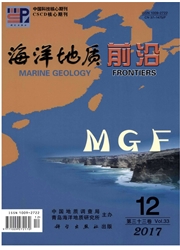

 中文摘要:
中文摘要:
基隆凹陷是东海陆架盆地主要沉积凹陷,自晚白垩世以来,共经历了裂陷期、裂后沉降期和区域沉降期等3个构造演化阶段,沉积了巨厚的新生代地层。基隆凹陷为一被断层复杂化的半地堑凹陷,属于东断西超的箕状断陷。新生代自西向东可划分为西部缓坡断阶带、中央洼陷带和东部陡坡带3个构造带。始新统至中新统发育多套生储盖组合,表明基隆凹陷具有良好的油气资源潜力。
 英文摘要:
英文摘要:
The Jilong Sag is a depression within the East China Sea shelf basin. Since Late Cretaceous, the sag has experienced three stages of tectonic evolution, i.e. the rifting, the post-rifting subsidence and the regional subsidence. Thick Cenozoic deposits are formed in the sag. The sag is in fact a half- graben tectonically complicated by faults in the east, but overlapping in the west. The Cenozoic can be divided into three structural belts from west to east namely west fault belt of gentle slope, central belt of depression and eastern belt of steep slope. From Eocene to Miocene there had developed several sets of source-reservoir-cap assemblages, suggesting a high hydrocarbon potential in the Sag.
 同期刊论文项目
同期刊论文项目
 同项目期刊论文
同项目期刊论文
 期刊信息
期刊信息
